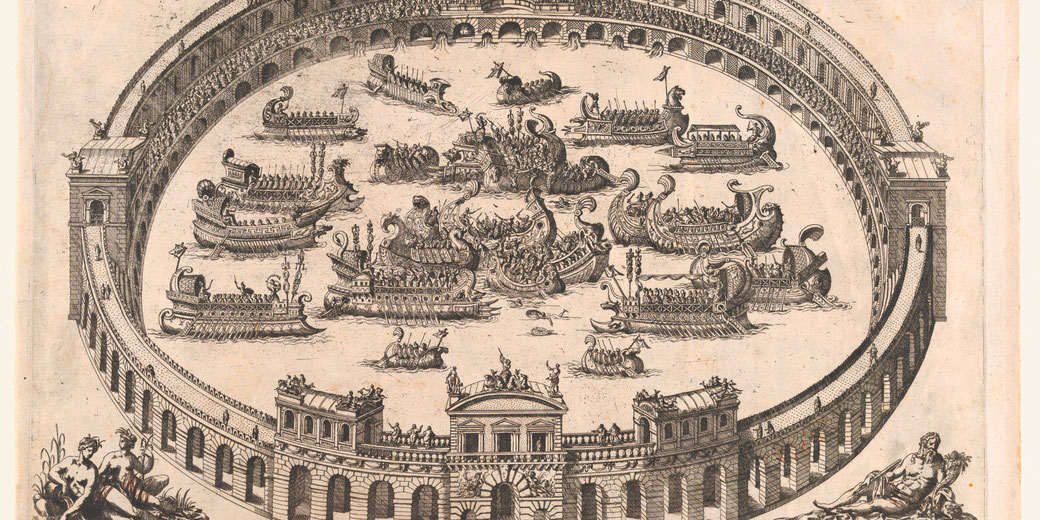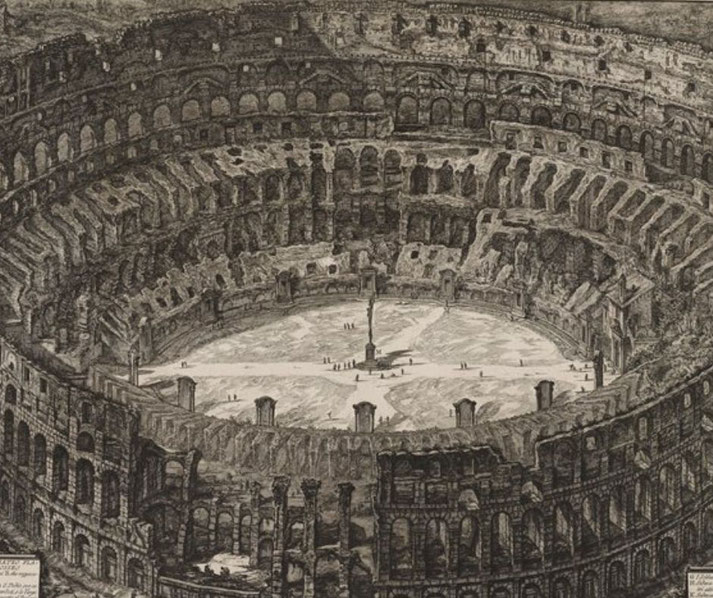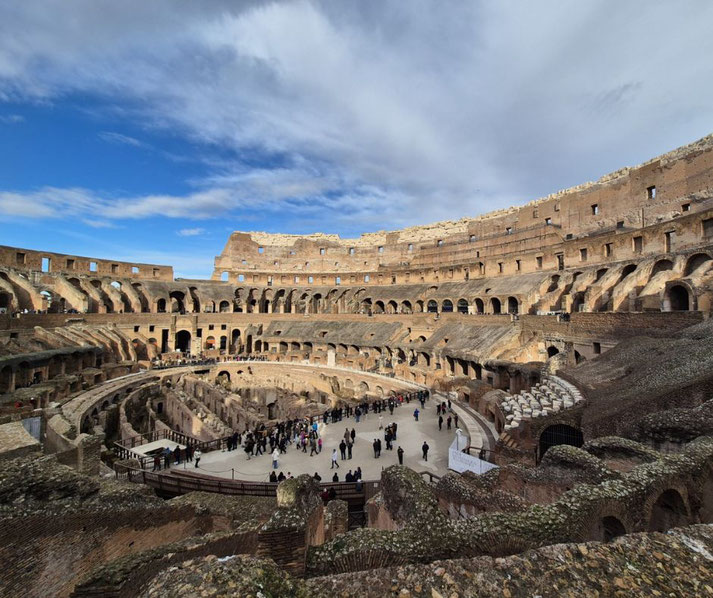When the Colosseum was flooded so that the Romans could watch a mock naval battle

The Colosseum in Rome, Italy, is known as one of the most iconic symbols of ancient Rome. Built almost 2,000 years ago, the Colosseum was a venue for various types of entertainment, including gladiatorial contests and animal hunts.
However, one of the most intriguing and lesser-known events held in the Colosseum was the naval battles that were staged on a massive pool created inside the arena.
Fake naval battles like these were held on a number of occasions in Roman history and were known as naumachiae.
What were 'naumachiae'?
Naumachiae were staged naval battles that took place in ancient Rome. They were often held in a specially constructed arena that was filled with water to create a large pool or lake.
These events were highly orchestrated and were often accompanied by elaborate sets and theatrical productions, designed to recreate a realistic maritime environment.
The ships used in naumachiae were typically manned by slaves or prisoners, and the battles themselves were often highly choreographed, with the ships engaging in mock naval warfare using weapons such as grappling hooks, catapults, and ballistae.
Roman naumachiae were not just entertainment; they served as grand displays of imperial power and engineering, reinforcing the emperor’s ability to stage extravagant spectacles that demonstrated Rome’s control over land and sea.
Naumachiae before the Colosseum was built
The first recorded naumachia took place in 46 BC, which was organised by Julius Caesar.
It featured a mock battle between Egyptian and Tyrian fleets on an artificial lake built near the Campus Martius in Rome.
Later, in 2 BC, Augustus sponsored one near the Tiber River where he had an artificial basin constructed. This time, it was a naumachia between Athenian and Persian navies.
There is evidence that Emperor Claudius also hosted a mock naval battle on Lake Fucino in AD 52, involving around 100 ships and an estimated 19,000 participants.

The building of the Colosseum
The construction of the Colosseum, also known as the Flavian Amphitheatre, began in AD 72 during the reign of the Emperor Vespasian and was completed in AD 80 by his son Titus.
The massive amphitheatre was built on the site of an artificial lake in the heart of Rome, and it was constructed using materials such as concrete, travertine, and tuff.
The Colosseum was a massive oval-shaped structure that measured 188 meters by 156 meters and was 48 meters tall.
It had a seating capacity of up to 80,000 spectators by some estimates and was used for a variety of events, including gladiator contests, animal hunts, and naumachiae.
The structure was designed to be easily accessible, with 80 entrances and exits, and it was equipped with advanced technology for its time, such as a retractable awning system to protect spectators from the sun and rain.
Naval battles in the Colosseum
The first naval battle staged in the Colosseum was held in AD 80, during the inauguration of the Flavian Amphitheatre.
The event was organized by the Emperor Titus and involved over 3,000 men and a large number of ships.
The spectacle was so popular that it was repeated several times over the years.
The floor of the arena was filled with water, and elaborate sets were constructed to recreate various maritime scenes, such as ports, islands, and even entire cities.
The ships used in the battles were often scaled-down versions of real warships, and were manned by prisoners, slaves, or criminals who had been sentenced to death.
The battles themselves were often highly choreographed, with the ships engaging in mock naval warfare using weapons such as grappling hooks, catapults, and ballistae.
The audience would be seated around the lake, and would watch as the ships collided and sank, while soldiers and gladiators fought to the death on the decks.
Archaeological evidence
Unfortunately, there is no archaeological evidence that naumachiae were held in the Colosseum.
Since the floor of the Colosseum underwent significant changes through its history, there is no way for archaeologists to determine how the Romans would have waterproofed the venue.
Also, it is not clear how the Romans were able to fill and then empty the structure so rapidly.
However, some historians are still confident that the spectacle did take place due to the survival of written accounts and depictions of naumachiae being held in the Colosseum.
The Roman historian Suetonius, for example, described a naval battle that supposedly took place in the Colosseum, and there are numerous depictions of naumachiae on ancient Roman artwork and coinage.

Decline in popularity
Despite the popularity of the naval battles, they were not without controversy.
During the rise of Christianity in the later years of the Empire, people were opposed to the idea of staging such violent and expensive spectacles.
The use of prisoners and slaves as combatants was also seen as highly unethical, and the high mortality rate among participants only added to the criticism.
Additionally, by the third century AD, economic difficulties led to a decline in naumachiae, with later emperors such as Diocletian and Constantine focusing more on gladiatorial combat and chariot races instead of costly naval spectacles.
What do you need help with?
Download ready-to-use digital learning resources
Copyright © History Skills 2014-2025.
Contact via email
With the exception of links to external sites, some historical sources and extracts from specific publications, all content on this website is copyrighted by History Skills. This content may not be copied, republished or redistributed without written permission from the website creator. Please use the Contact page to obtain relevant permission.





